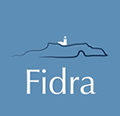Retailers are continuing to make positive changes to help consumers become more aware of the standards they hold themselves to when sourcing Scottish salmon products. In turn, this helps consumers make informed decisions when they buy salmon products. All Scottish salmon has been exclusively farmed since 20021 and most retailers have included this on labels, but still so few consumers are aware of this2. Why is there a disconnect? It is clear consumers want more information on salmon product packaging2, but there is a thin line between digestible information and an information overload. Whilst retailers continue to determine how best to provide information, here at Fidra we have updated our ‘retailer transparency table’ and ‘retailer standards table’ to help consumers understand more about the Scottish salmon products they are buying.
What’s New?
All retailer websites now include more information on seafood sourcing online than ever before.
-
-
- The WWF basket3 launched in Autumn 2021 with Co-op, M&S, Sainsbury’s, Tesco and Waitrose signed up to the associated Retailers’ Commitment for Nature 4. The basket is a blueprint for action and sets a minimum requirement followed by clear commitments for more ambitious targets to be met, including ‘All seafood sourced should be certified or from a third party verified equivalent and be sourced from areas adopting an area-based ‘Seascape’ Approach’. Whilst transparency is a way in which this target can be met it is not a compulsory target within the blueprint for action, with this in mind we have removed it from our retailer transparency table.
- Co-op shared their supplier sources.
- All of Sainsbury’s fresh Scottish salmon is ASC certified and all smoked salmon is expected to follow suit in 2023. They also confirmed they are working towards the Sustainable Seafood Coalition’s (SSC) best practice guidelines on labelling, hopefully we will see more updates on their progress over the next year.
- All Atlantic salmon products at M&S are exclusively sourced from Scotland. Their interactive map is continually improving and includes details on fish farming; supplier locations, certifications, and other useful additional information5.
- Aldi began to include farm name on some Atlantic salmon products.
- Waitrose have been doing lots behind the scenes working closely with their suppliers Aquascot to improve practices. The Waitrose aquaculture protocol6 ensures there is compliance across the whole supply chain, farms must meet 37 assessment points including welfare and harvesting standards. Farms are removed annually if they are not compliant. This is monitored by SSC and Waitrose are also committed to give people accurate information when queried by consumers about pack labelling of Scottish salmon products even though they do not include farm name on packaging.
- Waitrose are now part of the Ocean Disclosure Project (ODP7) and Morrisons are now part of the SSC scheme8.
-

Next steps
Fidra recognise our retailer transparency table does not provide in depth detail on what each retailer is doing to improve transparency, nonetheless it provides clear bench markers we believe need to be achieved to determine if the retailer is achieving best practice. This year, only one additional retailer, Aldi, began to include farm name on some Atlantic salmon products. Whilst this is excellent news, more salmon products across a variety of price points urgently need to carry information on transparency to improve transparency in the sector without restrictions.
Our new retailer transparency table is now live on our website. The retailer transparency table helps you identify best practice across retailers, so you can shop in confidence.
Why are retailers still in amber for their commitment to transparency schemes when they are members of them?
The Sustainable Seafood Coalition (SSC) requires members to adhere to its labelling and sourcing codes of conduct. They aim to ‘provide consumers with accurate information on the provenance and sustainability of the fish or seafood’8. The best practice outlined in the codes includes transparency across the supply chain. Only Sainsbury’s have confirmed they are working towards the SSC’s best practice guidelines on labelling. Fidra will check in annually to see progress to ensure we are giving consumers the most accurate on this as we believe following the labelling and sources codes of conduct are the minimum required level of transparency, and we hope that retailers aspire to be fully transparent with consumers in future.
Recommendations to retailers
To support consumers and to ensure the industry is accountable across the supply chain, retailers must be proactive in improving traceability, transparency and reducing the environmental impacts of Scottish salmon farming. We therefore ask that retailers:
-
-
-
-
- label all own brand Scottish salmon products with the name of the source farm, regardless of price point;
- show support for a real time salmon farming dashboard that provides information to consumers down to farm-level;
- commit to all transparency schemes;
- ensure they source their salmon from producers that meet the strictest regulatory and certification standards;
- provide up to date and accessible information on their websites;
- support calls for the Scottish salmon farming industry to reduce its environmental impacts.
-
-
-
To find out more see Our position page here.
References
- Scottish Government (2002). The Conservation of Salmon (Prohibition of Sale) (Scotland) Regulations 2002. SCOTTISH STATUTORY INSTRUMENTS. Accessed May 11, 2022. https://www.legislation.gov.uk/ssi/2002/418/introduction/made
- Fidra (2022). Scottish Salmon Farming – Consumer Survey Results. Accessed July 1, 2022. https://www.bestfishes.org.uk/wp-content/uploads/Consumer-survey-2021-Report_FINAL.pdf
- WWF (2021). The WWF Basket Blueprint for Action. Accessed November 25, 2022. https://www.wwf.org.uk/sites/default/files/2021-11/WWF-Basket-Blueprint-for-Action.pdf
- WWF (2021). WWF’s Retailers’ Commitment for Nature. Accessed November 25, 2022. https://www.wwf.org.uk/sites/default/files/2021-11/WWF-Retailers-Commitment-for-Nature.pdf
- M&S (2022). M&S Interactive Map. Accessed November 25, 2022. https://interactivemap.marksandspencer.com/?loc=62dea023af2200b88eb6b560&cat=62bc79bb1d4c1ff1c6202a54&lay=62dea007af2200b88eb6b54f&tag=62befe57385feb9452be6b44
- Waitrose (2018). Consultation Response to the Rural Economy Connectivity Committee on Salmon Farming. Accessed November 25, 2022. https://archive2021.parliament.scot/S5_Rural/Waitrose.pdf
- Ocean Disclosure Project (n.d.). Transparency in Seafood. Accessed July 1, 2022. https://oceandisclosureproject.org/
- Sustainable Seafood Coalition (2015). Guidance – Voluntary Codes of Conduct. Accessed May 17, 2022. https://www.clientearth.org/media/0abdgbsc/ssc_codes_guidance_2021_004.pdf

